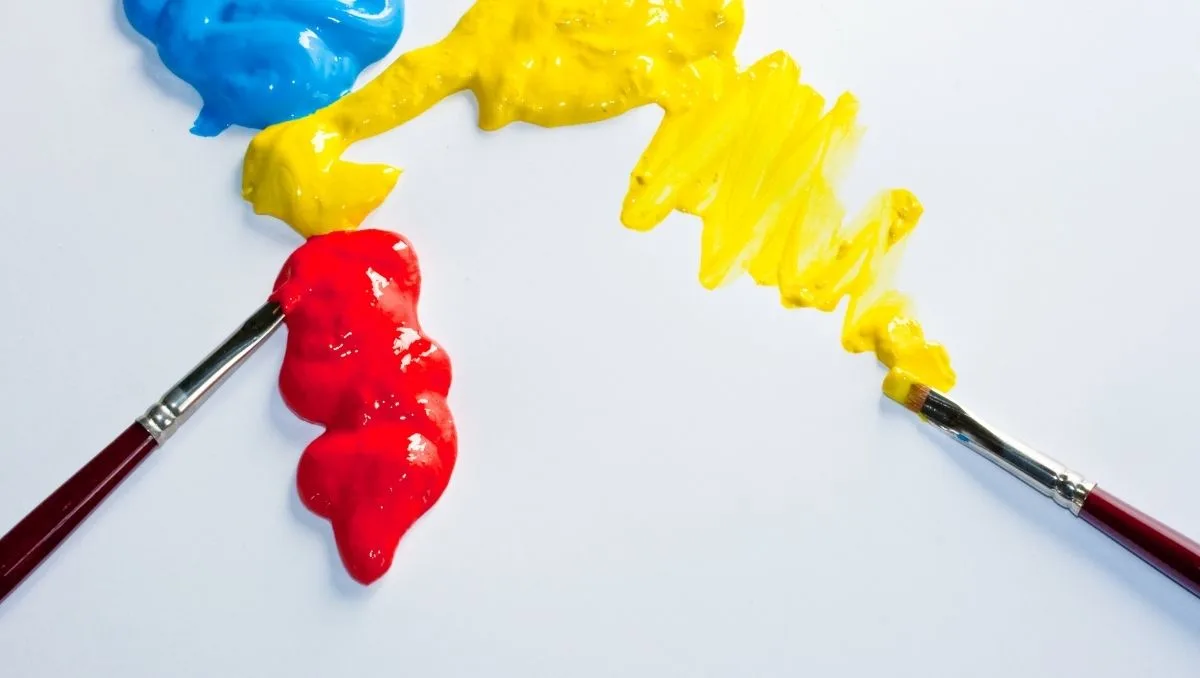Do you know what colors make red?
Do you want to mix different shades of red?
Red is one of the primary colors used in painting.
It’s a very important color in painting.
Across cultures, it was one of the first colors found that could be used in pigments and dyes from ancient times.
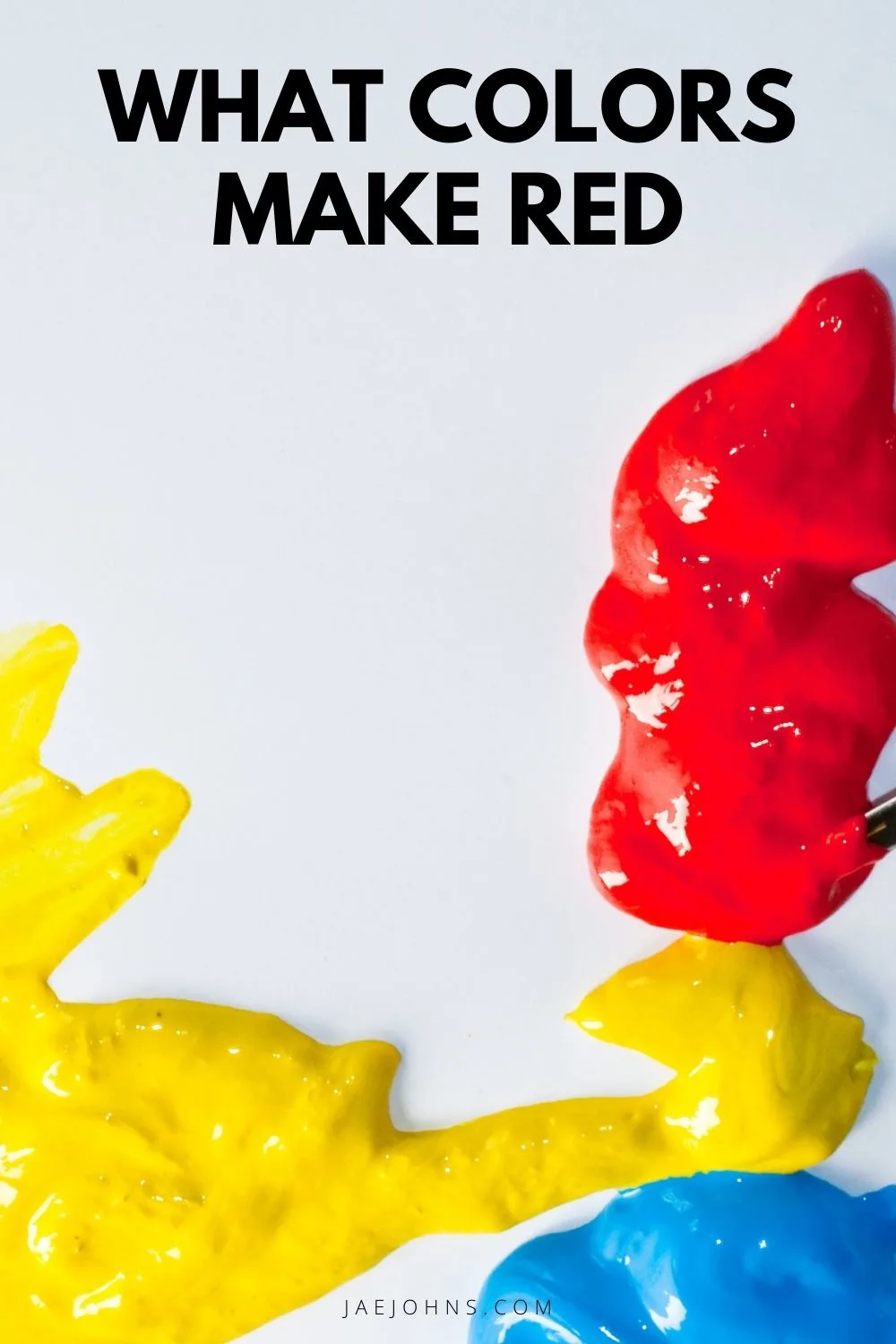
What color is red
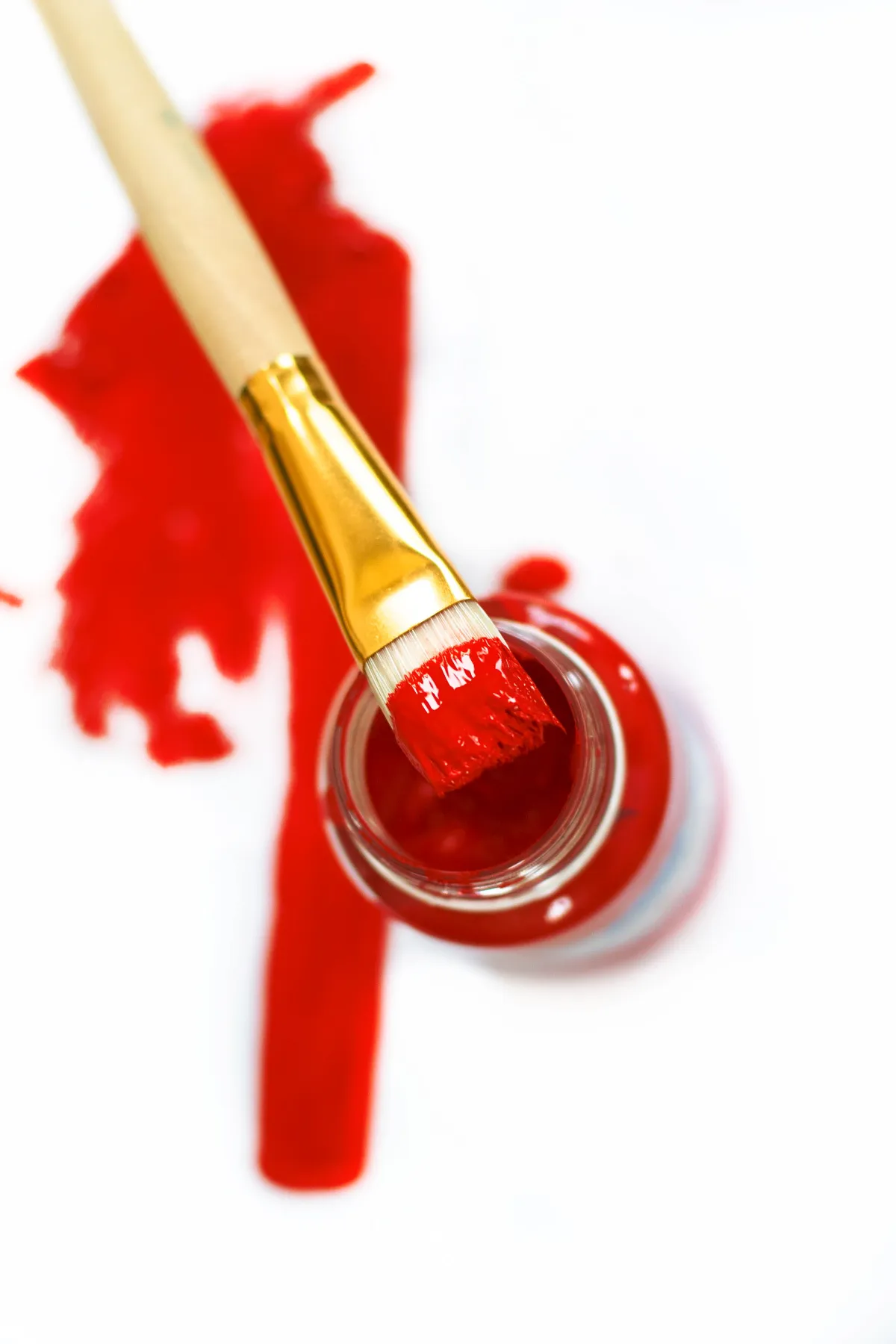
All colors can subtly affect our mood.
What makes red powerful in art is its strong associations with different aspects of life.
It can mean love, passion, and heat, but it can also represent blood.
In this way, red is a temperamental color, indicating heightened emotions and change. Where blue is calm, red is exciting.
Due to the strong attention the color red commands, it is also used for traffic lights and stop signs to get people to pay attention.
In terms of color theory, red is one of the three primary colors, along with blue and yellow in the additive color wheel.
Using these three colors alone, you can mix any other color in the color wheel for oil, acrylic, and watercolor paint.
What colors make red
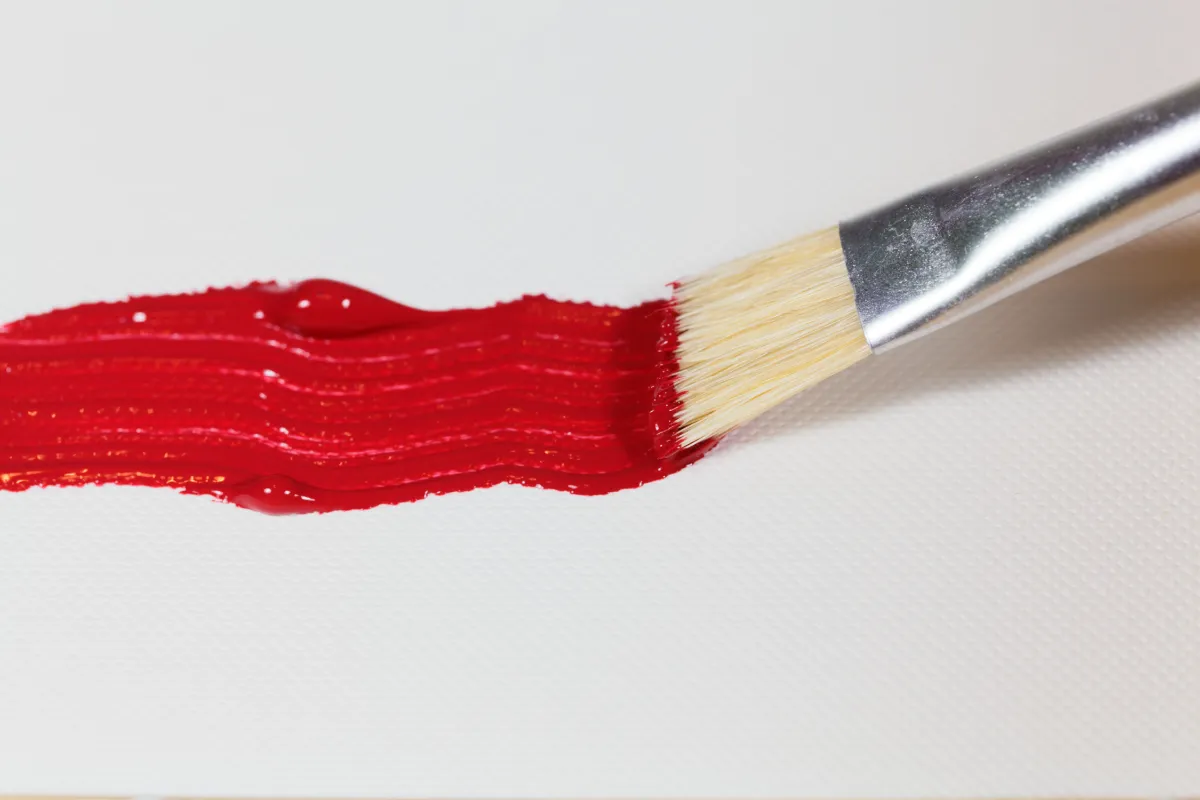
If you are looking for what colors make red, then know there are almost no colors that can be directly mixed to make red with paint.
There is a way to mix it using magenta and yellow, but people don’t typically have magenta paint.
If you happen to have some, though, you can use them.
This is because, in painting, red is a primary color.
So people use red to mix the other colors on the color wheel, not the other way around.
Each pair of the three primary colors combines to make one of the secondary colors, and then each secondary color can be further combined into tertiary colors.
There are a few ways you can systematically mix red into other colors.
Adding blue to red paint will lead it towards purple, whereas adding yellow will lead it towards orange.
However, there is a moment before it becomes a true purple where it becomes a cool red.
Similarly, there is a moment before it becomes a true orange that it becomes a warmer red.
These are spots you’ll want to learn to produce different shades of red.
It is also possible to mix in black or white to create other reds.
Mixing in black will create a deep crimson while mixing in white will quickly create a pink.
What two colors make red

The two colors that can make red are not primary colors.
As I mentioned above, red is a primary color and typically can’t be produced by mixing other colors together.
However, another method of how to make red is you can mix yellow and magenta.
It is also possible to get a color within the red spectrum by mixing highly red-leaning purple and orange.
This isn’t truly producing a red from other colors, but rather hides the blue in the purple and the yellow in the orange by combining them into a reddish-brown.
You can learn more about what two colors make red through color bias.
Color bias refers to which of the primary colors is most prominently underlying a mixed color.
For example, a very cool green has more blue than yellow, whereas a warmer green has more yellow than blue.
Using the temperature as a guide, you can tell when an orange has more red if it looks ‘cooler.’
When a purple has more red in it, it looks ‘warmer.’
This reveals one of the strange features of red regarding its color temperature: red can act as both a warming or a cooling color, whereas blue always cools a color and yellow always warms one.
What primary colors make red
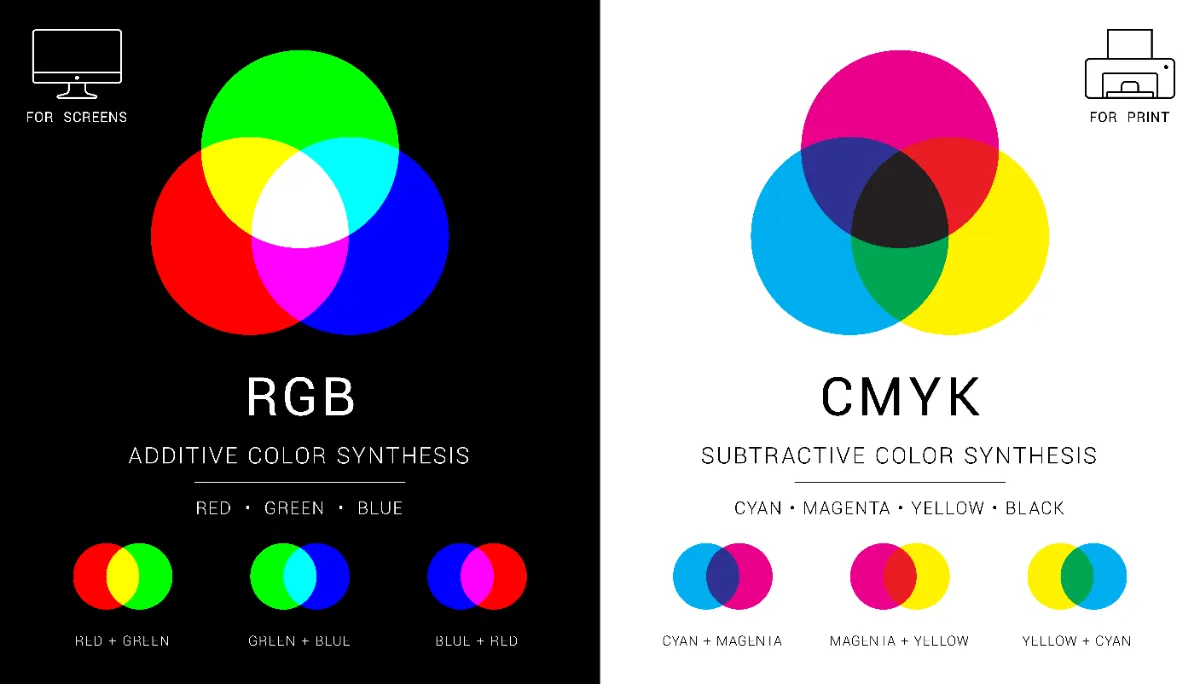
When considering what colors make red, red is a primary color, and because of that, you can’t easily make it out of other colors.
The primary colors in additive color mixing are red, blue, and yellow.
You can make any color on the color wheel using just these three colors alone.
In the subtractive method of color mixing, magenta and yellow are the primary colors you can mix to make red.
Cyan is the other primary color in that model.
You can also learn to make bright red paint using magenta as a base.
How to make red paint
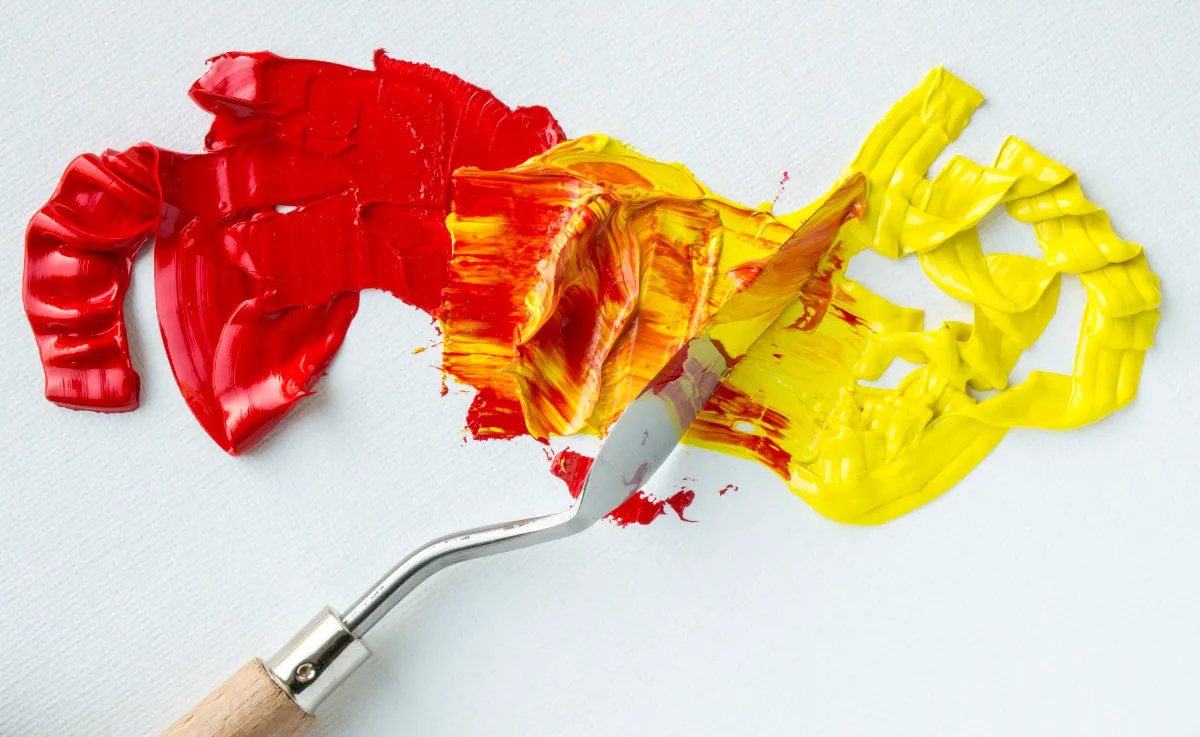
One method that you can use to make red with paint is by mixing a red pigment with a medium.
Acrylic paint uses an acrylic medium, available in art supply stores.
Oil paint uses an oil medium, usually flaxseed oil.
And then water paint, unsurprisingly, uses water.
What color makes red doesn’t depend on the medium.
If you wanted to make red paint at home, you’ll typically mix the pigment with the medium using a glass plate and a mixing utensil – a glass muller is best, but a palette knife will also work.
Mixing red paint from other colors is not easy to do as red is a primary color.
You’ll usually have to buy your red paint directly from the store.
However, it can be fun to make it at home using a red pigment and medium, if that’s a craft you’d like to pick up.
Some people even forage their own ingredients to be used as a pigment as part of the hobby.
How to make dark red paint
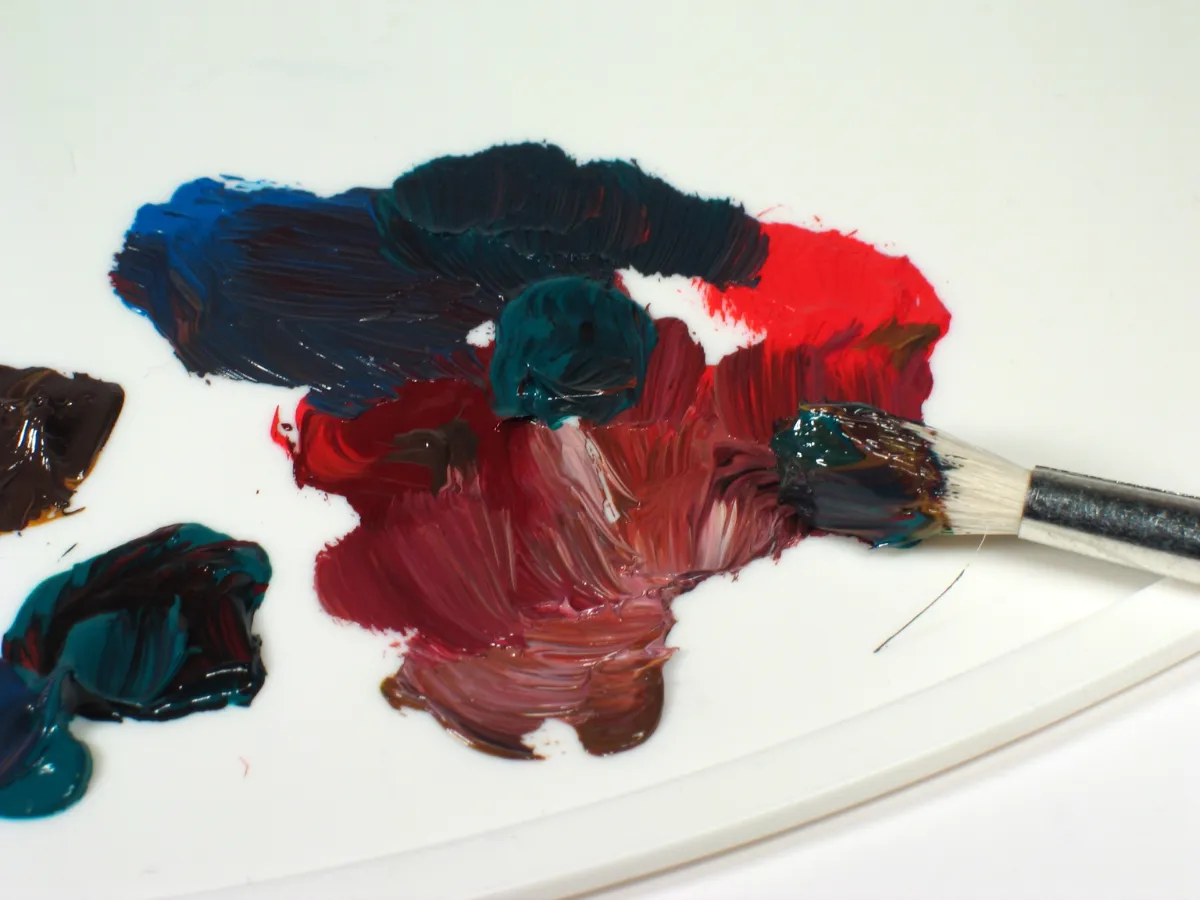
There are two main ways how to make dark red paint: through its hue or its value.
Hue refers to colors without white or black added.
However, you can still make red darker without black by mixing it with its complementary color. Red’s complementary color is green.
So by mixing red with green, you will get a more brown color, but it will also darker your red overall.
Value refers to how much lighter or darker a color is.
Thus, you can learn how to make red paint darker simply by adding black to change its value.
It’s probably the best move to experiment with both ways of making red darker to learn how different color mixing affects it.
What two colors make dark red
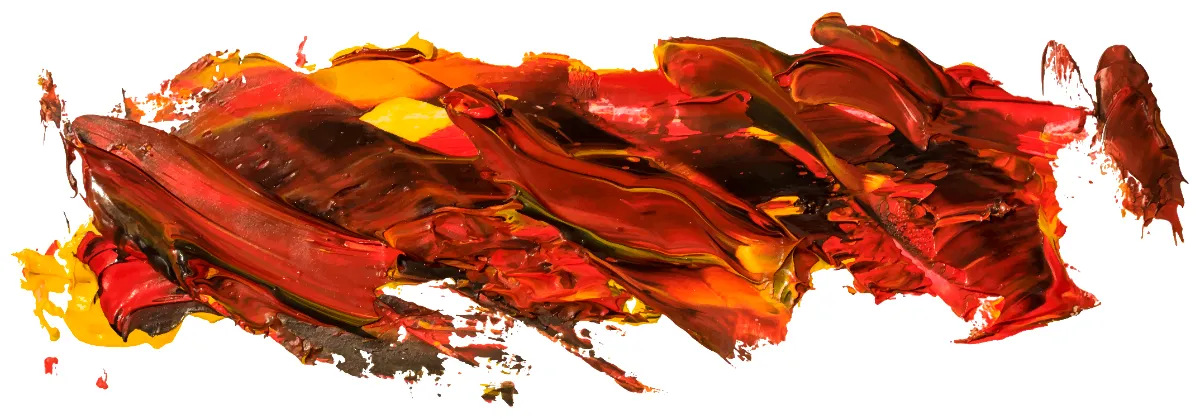
As we’ve seen above, when considering what colors make dark red, adding green or black are the best ways to do it.
However, before you get started adding a bunch of either, you should start with some of the smallest amounts possible.
Also, make sure to mix under consistent lighting conditions, as this can make a big difference.
If you add too much green, you’ll quickly get a brown color instead of a red. Generally, 1-part green to 10-parts red is a good ratio to keep in mind.
If you add too much black, you’ll lose the sense of red in the color and it’ll become washed out.
So generally, this isn’t the best option if you want to keep your red looking vivid, but can help to give a wider range of tones.
There is also the option of beginning with a darker red to begin with.
Many painters use Alizarin Crimson in their selection of colors as it is a deep red that is not easily achieved by mixing other colors.
Finally, there is one more option for what colors make dark red by mixing red with blues, especially ones closer to violet.
This method requires a delicate touch, as you can very easily produce a purple instead of a dark red, but with the right blue in the right amount, there are some ways to make red paint darker that are hard to get using other methods.
Other related topics to help you
- What Colors Make Blue – Mixing Different Blue Shades
- What Colors Make Orange – How to Mix Different Shades of Orange
- Secondary Colors: What They Are & How to Use Them
- What Colors Make Purple & How to Mix Different Shades of Purple
- What Colors Make Green & How to Mix Different Shades
- Warm and Cool Colors: Beginner’s Guide
- What Colors Make Black? How to Mix Shades of Black
How to make bright red
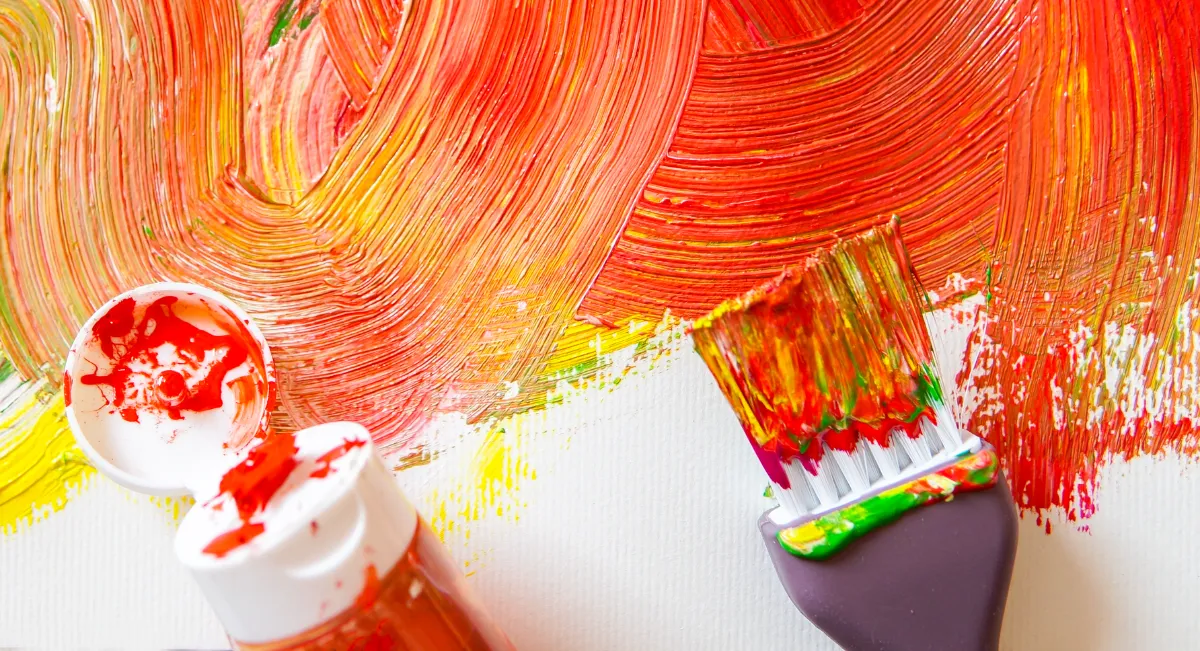
Brighter red can refer to either more vivid red or more orange-red.
If you mix red with white, you won’t get a lighter red but a pink almost immediately, which is usually not what people mean by bright red.
The best way how to make bright red paint is to start with the most highly pigmented red you can buy in your medium.
That’s where the vividness starts.
Another method is to place your red alongside specific colors and tones, as this will make it pop. We’ll look at which work best for this in a later section.
To make it more orange-red, you can either add orange or yellow to the red, and it will brighten it up quickly.
About 1 part of orange or yellow per 10 parts red is a good start to keep the red within a red range rather than a true orange.
What colors make red without magenta

What makes red without magenta?
Without magenta, there’s no easy way to mix a true red.
As a primary color, it’s what is used to mix other colors, not the other way around.
There is one trick that can get you a red if you mix a reddish-purple and reddish-orange, as this will concentrate the red in both.
It’s not the best method, but it will get you a brownish-red if you’re struggling to find any other options.
For a warmer red, you want more yellow tones underneath the red.
Mixing red with a tiny amount of cadmium yellow or yellow ochre will work great for this.
For a cooler red, you’ll want to add some blue tones underneath it.
Ultramarine blue is a great choice for this, or cerulean blue.
Just add a tiny amount of either to deeper your red.
What acrylic colors make red
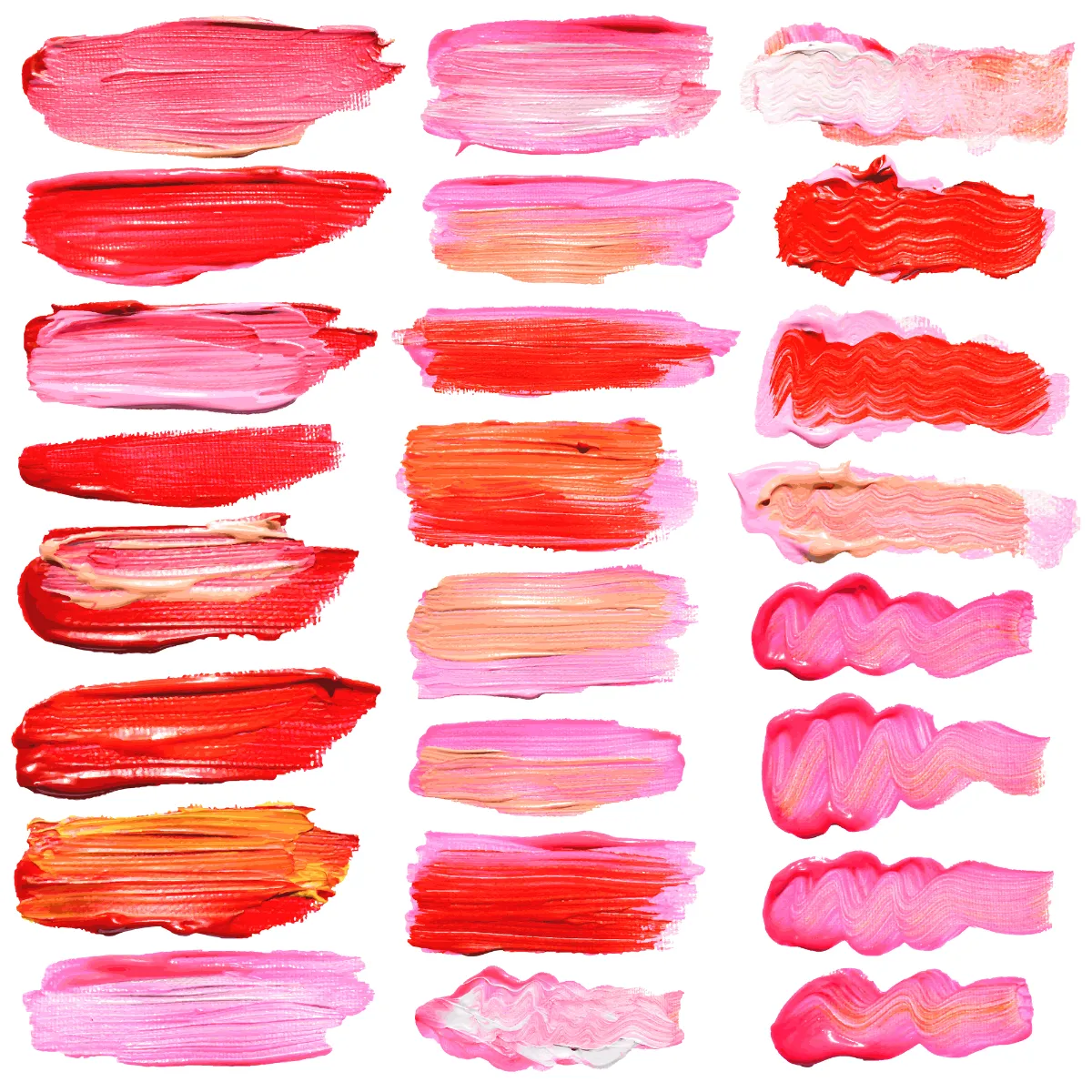
Acrylic colors work the same as oil in terms of color mixing.
As I’ve mentioned above, red can be made with magenta and yellow, or by mixing colors with a lot of red already within them.
Generally, red is used as a primary color to mix other colors and can’t easily be reproduced using other colors.
If you’re making acrylic paint from scratch, you’ll start by mixing a pigment with an acrylic medium.
Acrylic paint is also much less expensive than oil paint.
So, if you are thinking of experimenting with color mixing, you could start with acrylics in order to hone your craft.
How to make red paint at home
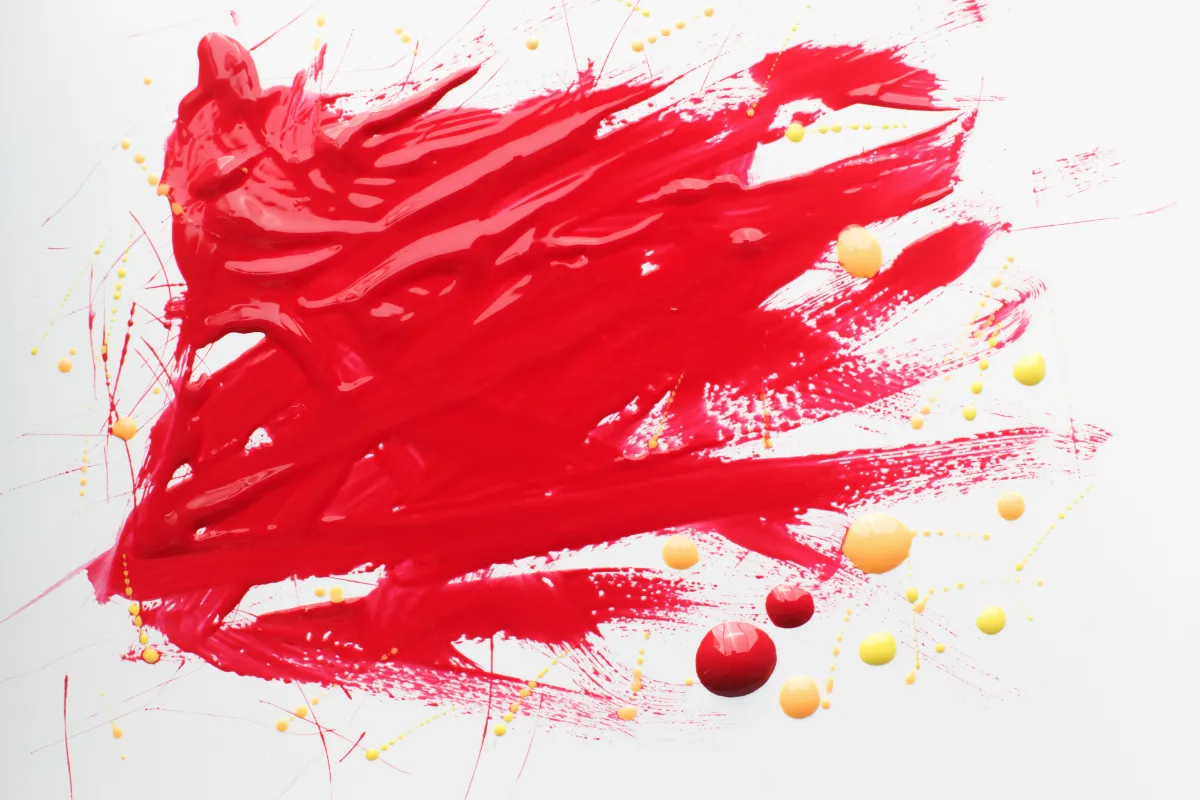
You can figure out how to make red with paint at home by mixing your own pigments with your preferred medium.
For example, with oil paint, you’ll mix it with an oil base, typically flaxseed oil.
Red ochre is a common choice of red pigment that comes from clay.
It has been used for as long as people have been painting.
Red pigments are very common in nature, so there are lots of other options as well.
Regardless of what pigment you choose, you’ll have to learn how to mix it with your medium. It can come either as a paste or a powder.
- You’ll need your medium (flaxseed oil), dust mask, red pigment, palette knife, glass surface, and pipette.
- If your pigment didn’t come as a paste, you can mix the dry pigment with a tiny amount of oil to create a paste to start with.
- Now, put on the dust mask and place a small amount of the pigment paste on the glass surface. A teaspoon is a good starting point.
- Then, start incorporating more and more of your oil medium into the pigment and mixing two using a palette knife. If you are more ambitious, you can get a glass muller, which will be more effective overall.
- In the end, you should add about twice the amount of medium as pigment and smooth out the mixture as much as possible.
- Scrape and place into a tube for safekeeping. You’ll need to seal the container in some way, just like with regular paint to keep it fresh.
What color makes red pop
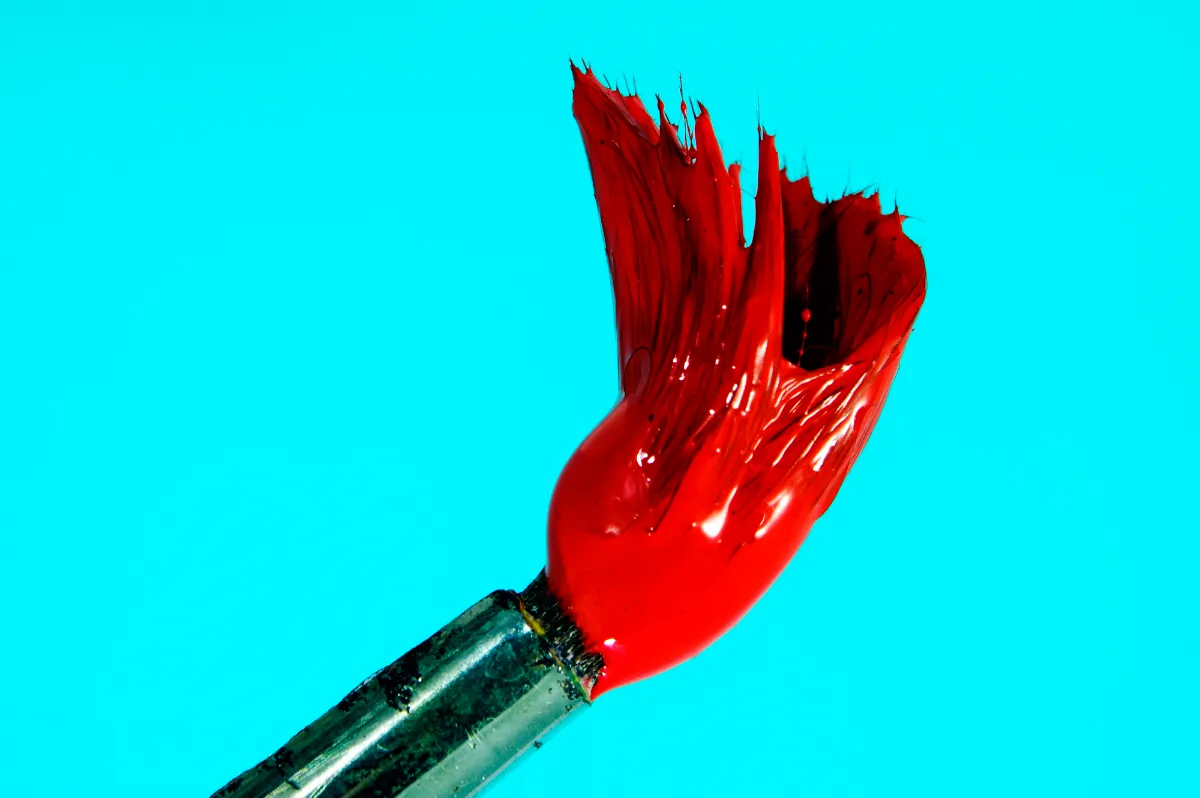
You can use a few different color schemes to make red pop.
For example, a monochromatic color scheme uses varying values of a single color to create a sophisticated look.
This would mean taking different shades of red to give a variety yet give the full focus to red.
Another style is analogous color matching, which pairs the color with those close to it on the color wheel.
For red, that means orange and purple.
Finally, you can do a complementary color scheme, pairing a color with its opposite on the color wheel.
That means green for red.
However, it’s also critical to get the right shades to work for each of these.
We’ll go over a few examples to show what I mean.
- Orange
For orange, almost any will work as a good complement to red.
This is because they give dimension to your red and can be considered an extension of a monochromatic scheme.
- Mint Green
Mint or pastel green works to highlight red and provide competing attention.
With a bright red mixed with a soft green, you focus on the red more overall, allowing it to pop.
Of course, green and red and famous together at Christmas, so it’s important to change up the tones of each if you use them together to avoid this association.
- Wood
Wood tones work great with red due to being a brown that is close to red in terms of analogous shades.
While not exactly a color, it can make certain tones of red pop.
- Peach
A darker red, peach, or apricot colors works as another great analogous shade.
As a lighter tone to the red, the red will be the one highlighted.
- White and off-white
Finally, although not a color, whites and creams work especially to highlight a red statement piece.
They fade into the background as red comes to the foreground.
Conclusion
Red will inevitably become a part of every painter’s life. By studying color theory and using the color wheel, you’ll gain an intuition for color mixing your reds in no time.
We hope that I’ve helped answer the question of how to mix red and use it with other colors to best bring it out in your painting. Happy painting!

